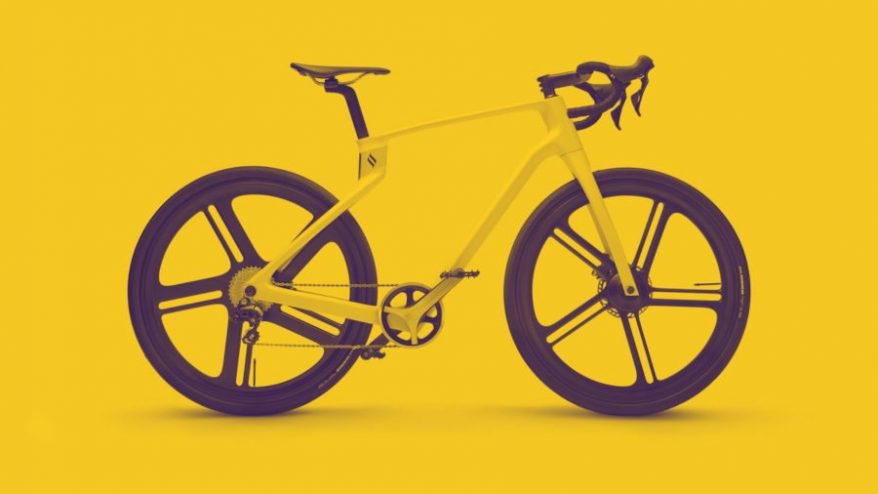
3D Printed Bikes: Riding into the Future


At 3DSourced we’ve covered everything 3D printing and 3D since 2017. Our team has interviewed the most innovative 3D printing experts, tested and reviewed more than 20 of the most popular 3D printers and 3D scanners to give our honest recommendations, and written more than 500 3D printing guides over the last 5 years.
3D printed bikes and bike accessories are quickly gaining popularity with consumers and sellers alike. The lightweight materials involved in 3D printing goes a long way towards making faster and easier-to-control bikes, and the easily modifiable designs are popular for their range of use and added accessibility.
Bikes are versatile vehicles. Whether riding to the store or cycling around the world, reliability and safety are important factors regardless of the manufacturing process involved. From 3D printed mudguards to entire frames, 3D printed bikes and bike parts are recognized for their sturdiness and light weight without sacrificing safety.
In this article, we’ll look at some excellent cases of additive manufacturing in the bike industry before highlighting some of the most exciting fully 3D printed bikes and bike frames. We also include custom bike accessories and stuff you can print at home for a more affordable and personalized biking style.
If you’re a cyclist interested in 3D printing your next ride, or a 3D printing enthusiast looking for a good way to make your commute easier, there’s plenty to talk about.
- Fully 3D Printed Bikes
- Arevo’s Superstrata – A Peek at the Future of 3D Printed Bikes
- Kingdom Bike’s The Void – The Importance of Field Testing
- The OBI 0.5 – An Old Design Worth Revisiting
- 3D Printed Bike Parts
- 3D Printed Bike Accessories
- Before You Commit: A Buyer’s Guide to 3D Printed Bikes
- Bikes Are Not Toys
- Always Go Professional
- Maintain and Repair
- How much does a 3D printed bike cost?
- What is the world record 3D printed bike?
- Conclusion
Fully 3D Printed Bikes
While 3D printed bike parts, accessories, and additions are pretty cool; the philosopher’s stone-level legend here would be a bike made entirely by 3D printing. While this is a while off yet, breakthroughs and testing show that it may be closer than we think.
Arevo’s Superstrata – A Peek at the Future of 3D Printed Bikes
In 2018, Silicon Valley-based startup company Arevo unveiled their concept for a fully 3D printed bike frame.
Because it’s printed as one solid model, the Superstrata has no extra parts holding it together. This eliminates the need for soldering, welding, or gluing, and also avoids any wear between joints because there aren’t any!
In 2020, under the brand Superstrata, they released their first fully formed 3D printed carbon fiber bike frame.
Arevo state the importance of their use of carbon fiber in this full bike model as an upgrade to the various held-together pieces involved in traditional machining, which are prone to breaking under pressure.
Carbon fiber (such as NylonX and Pro FLEX brands) is quickly being recognized in 3D printing for its heat resistance, durability, reliability, and longevity compared to a standard plastic material, not to mention how much more affordable they are compared to complex metal parts.
Every one of these benefits is a good thing for cyclists looking to go down the 3D printing route for future endeavors, with Arevo in particular advertising the increased impact resistance their 3D printed bikes offer.
- You can also check out our guide to carbon fiber 3D printing.
Carbon fiber bikes are high-performance rides, often costing upwards of $4,000. Arevo opened their preorders in July 2020 for their Superstrata range from $2,799.
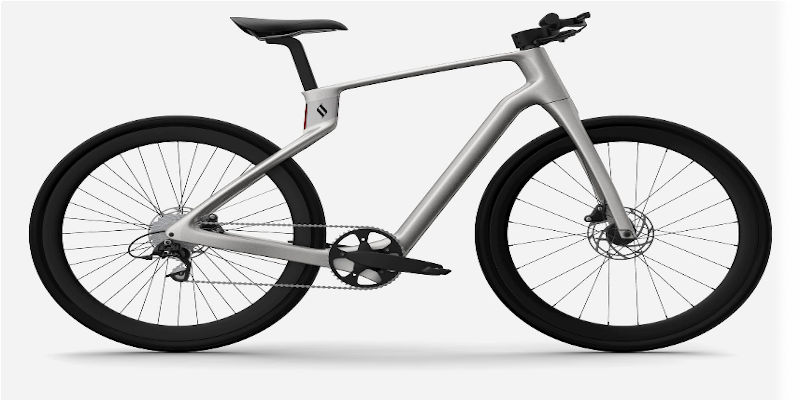
While 3D printing full bikes with carbon fiber polymer is still expensive, 3D printing one single part saves money compared to importing other parts needed for assembly, further highlighting the importance of 3D printing bikes for sale as a way of getting good quality, quickly made 3D printed bike models to consumers at a lower price.
On this difference in manufacturing and product costs, Arevo founder Sonny Vu has said ‘We don’t really care about margin that much. This is about almost a market demonstration of the tech.’
While this may not sound like the kind of idea someone would take straight to the bank regarding 3D printing bikes, it shows a faith in the future of the technology that companies are clearly keen to express.
Kingdom Bike’s The Void – The Importance of Field Testing
In 2020, Kingdom Bike committed to lowering their carbon footprint by embracing additive manufacturing
They hope to make a greener name for themselves by lowering the need for imports, replacements, and extra tools that are often necessary in traditional manufacturing.
In January 2021, Kingdom announced their intentions to begin prototyping new 3D printed bike frames made from titanium, which they have named The Kingdom Void.
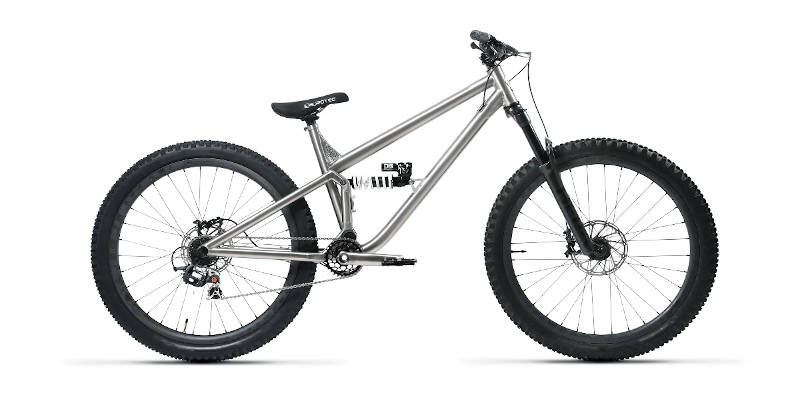
The Void was made with the idea of reducing the wasted material that often comes as a result of traditional or CNC machining to create a working bike model ready for cycling.
It’s worth keeping in mind that safety and reliability are still of utmost importance, so exciting as breakthroughs and technological developments in 3D printed bikes are, they are nothing if not safe for the rider. Because of this, many innovators are hesitant to release their products without rigorous testing, and Kingdom is no different.
Their testing process is made simple on their website, which states ‘We will ride and ride and ride until the wheels fall off.’
Kingdom is cutting no corners in their use of additive manufacturing to make their 3D printed bike frames, but safety is always going to come first. This can be easily seen in their constant and rigorous testing.
The OBI 0.5 – An Old Design Worth Revisiting
While industrial concepts for 3D printed bikes are still fairly new, Netherlands-based students Paul de Medeiros and Stef De Groot shared their ideas for open source 3D printed bikes back in 2015.
The concept was intended to both reduce the cost of buying and maintaining a bike, and take some of the strain off public transport. The result was the OBI 0.5, a DIY 3D printed bike prototype for anyone to make and use.
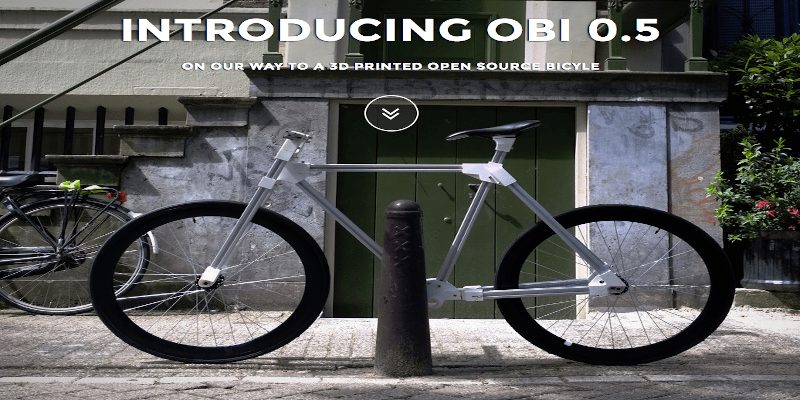
While the project never seemed to get off the ground, and the pair’s site has since gone down, the concept of a home-printed bike remains a feasible one.
The project may seem to have vanished, but the breakthroughs in fully 3D printed bike wheels, frames, and accessories since then have brought us closer to making our own bikes.
3D Printed Bike Parts
Any cyclist will tell you that an aging bike is a dangerous bike. Unlike a car, the rider isn’t covered by any kind of roof or screen. It’s integral to replace worn bike parts before your safety is put in jeopardy.
BigRep – 3D Printed Bike Tires
As well as pedals, 3D printing company BigRep made waves in 2018 with their first 3D printed bike tires. These tires use a prototype filament called Pro FLEX, which they claim is ideal for a bike wheel as its rigidity does not compromise flexibility.
- We also have a complete guide to every type of 3D printer filament.
Like NylonX, the German 3D printer manufacturer boast Pro FLEX’s high heat resistance and durability when showing off their new parts.
The benefit here is easy to see. 3D printed bike tires that don’t rely on rubber or air will never go flat, and the heat resistance ensures maintained reliability through high-friction contact.
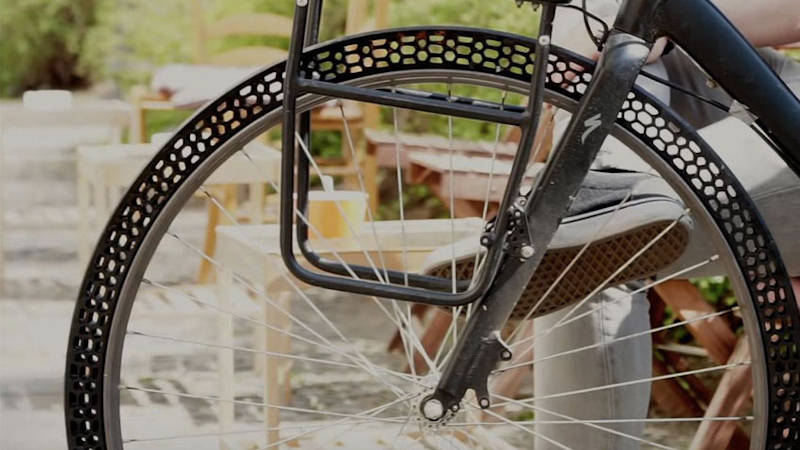
3D Printed Bike Accessories
As well as different parts, 3D printed bike accessories are a great way to add customizations and practical additions. These additions include water bottle holders, cell carriers, or even speakers that attach directly to the frame.

Most accessories are simple enough, but creative 3D printed bike additions can be found all over the internet. Some of our favorites include a 3D printed water bottle holder with additional slots for bananas, a 3D printed stereo speaker system that attaches to the handlebars, and a beer bottle holder.

Avid cyclists highlight customizability as one of the best reasons to own a bike. 3D printed mudguards and valve caps are an excellent way to make your bike your own.
Fans have also designed 3D printable parasol/umbrella holders, carry handles for folding bikes, and even a handlebar-mounted bubble machine as a fun 3D printed part that’s not practical but adds a little whimsy to your cycling route.

3D printed smartphone holders for bikes are essential for regular riders. If you’re riding for exercise, they’re handy for keeping on your favorite music and podcasts while on the track. And if you’re traveling, many of these holders are attached to the handlebars to give better access to maps for directions.
3D Printed Bike Accessories for Accessibility
As well as these cool and practical additions, custom bike accessories can also add accessibility. 3D printing artist and designer Kurt Boutilier has released several add-ons for bikes that can be 3D printed and modified for any use.
These additions are not simple accessories, of course, and include grip aids, brackets, and palm rests to aid in maneuvering, braking, and overall comfort for bike riders who may be suffering from injury, nerve damage, arthritis, or any other debilitation that would otherwise limit bike use.
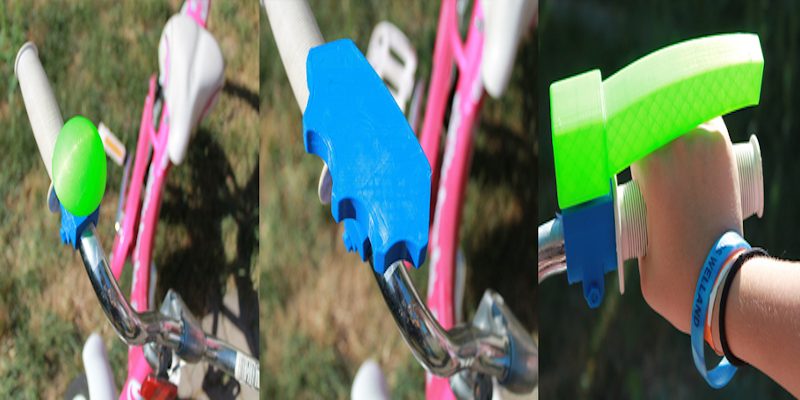
All of Boutilier’s CAD models for 3D printed bike accessories for the handicapped are available for free here.
Before You Commit: A Buyer’s Guide to 3D Printed Bikes
Before committing yourself to printing, buying, or using custom bike parts, there are a few things you should keep in mind.
Bikes Are Not Toys
Be advised that bikes are vehicles, and therefore need to be made and assembled very carefully and with due diligence to be considered safe enough for use. We do not recommend attempting to 3D print your own bicycle (or any other vehicle) unless you have the appropriate knowledge and experience.
Always Go Professional
3D printed bikes are fantastic things, and bike modifications are fine to make and install at home if you know what you’re doing. But for the bike frame itself, you should either buy from a professional industrial designer or at least consult one long before you get printing.
If you chose to create rather than purchase your next bike, be sure you know what you’re getting into before you get started.
Maintain and Repair
Like any vehicle, custom bikes need maintenance and care to continue being of smooth and safe use to their rider. Always keep your bike locked and sheltered to avoid weather damage when not in use, and address any issues – however minor – as soon as you’re able.
A squeaky brake or rusted head tube can turn into a traffic accident a lot sooner than you might think, so don’t let problems lie and keep your bike in top condition as much as you can, performing regular checks and maintenance as part of your life routine.
One thing leads to another before you know it, so it’s good to keep on top of safety.
How much does a 3D printed bike cost?
3D printed bikes go for anything between, but not limited to, $300 – $4,000 retail depending on the brands you’re looking at. To print yourself, you can expect to spend at least $150+ depending on your material and design method, though this is a very low estimate, and you should budget around $350+ if you’re planning to create a bike yourself.
What is the world record 3D printed bike?
The record for top speed reached with a 3D printed bike was set by Filippo Ganna on a model known as The Pinarello Bolide F HR 3D. The record, set in 2022, reached was a whopping 56.792km in one hour, riding at an average speed of around 35mph in part thanks to its light body.
Not only is this the world record for 3D printed bike speeds at the time of writing, it’s also the world record for bikes in general, which of course prompted the argument that it’s a fine example of how additive manufacturing holds a very important place in the competitive cycling circuit.
Conclusion
From 3D printed phone holders for bikes to fully formed and best 3D printed bike models, and everything in between, the technology for 3D printed bikes, bike parts, and accessories is constantly under new development.
The true benefits of 3D printing bikes are still to be confirmed. While companies such as Matterhackers and Arevo are still optimistic about the future of strong, durable carbon fiber filaments in bicycle production all over the world; the future of the industry lies in the further development of these materials.
Matterhackers have been using NylonX to make 3D printed bike parts, saying ‘When you need something that is going to be facing some strain and has to be tough, NylonX is our material of choice.’
If nothing else, cycling enthusiasts and casual riders alike should keep a close eye on how 3D printing is changing bikes. From safety and accessibility, cool and useful accessories, and even fully 3D printable bikes, anyone with an interest in cycling would do well to keep an eye on the new technologies.
With new innovations and filaments being used and tested for safety and reliability, the future of 3D printing bikes is a bright one indeed.




















